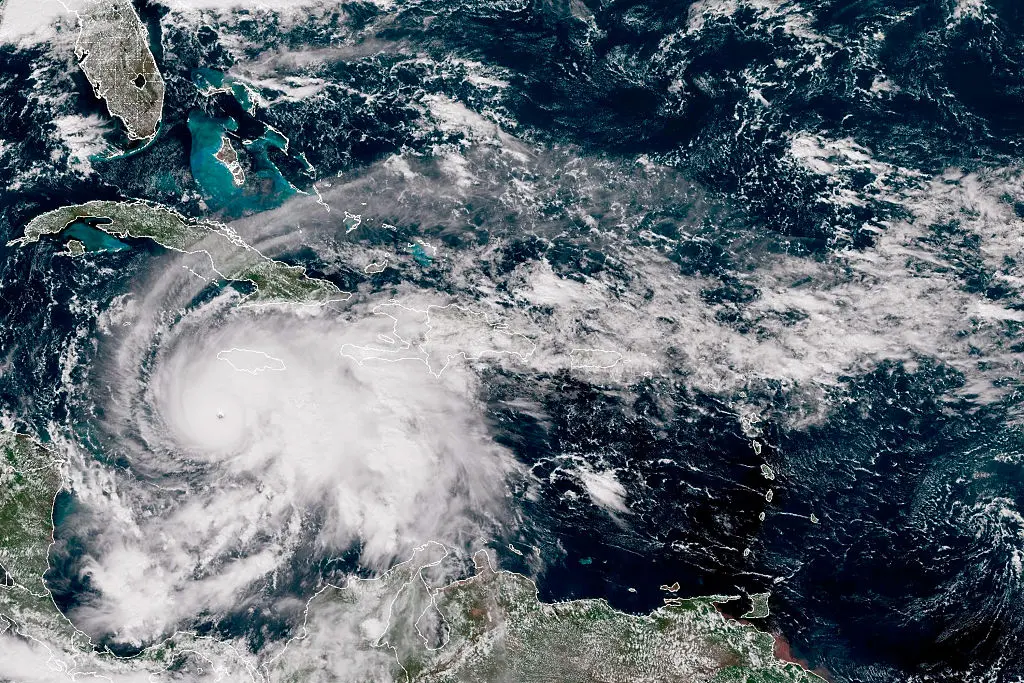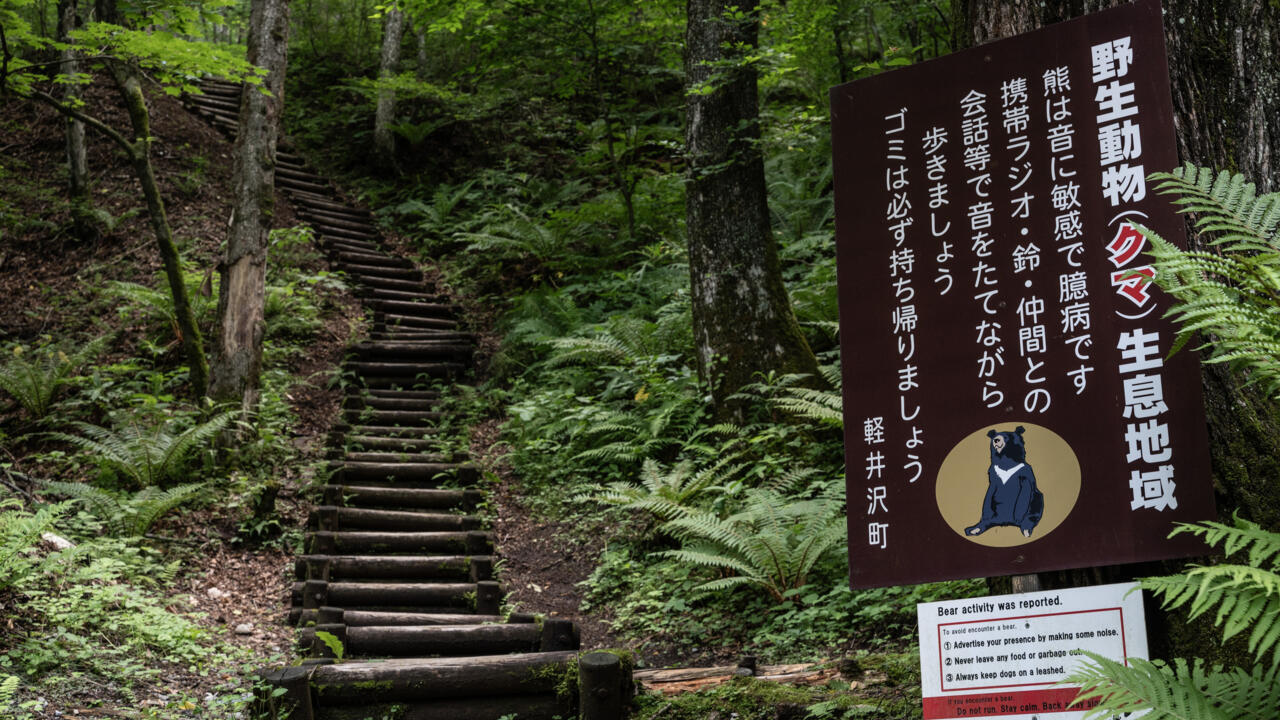Copyright newsletter

A Category 5 hurricane is expected to make landfall in Jamaica on TuesdayIt has already been linked with at least seven deaths across the Caribbean A combination of factors mean that ‘Hurricane Melissa’ has become incredibly strong Climate change has likely helped intensify it, experts say They warn it could be one of the most devastating storms to ever hit the island nation Jamaica is bracing for impact, as a potentially catastrophic storm rages towards it. Thousands of British holidaymakers are reportedly stranded in the Caribbean island nation, with Hurricane Melissa expected to make landfall on Tuesday afternoon UK time (October 28). It has been classed as a Category 5 tropical cyclone - the most intense and dangerous category - with wind speeds reaching over 157 miles per hour. This means that there will likely be widespread destruction of buildings and infrastructure, according to National Oceanic and Atmospheric Administration (NOAA) in the US, as well as a very high risk of injury or death. Tragically, the impending storm has already been linked with at least seven casualties. Three were in Jamaica as people tried to prepare, its Ministry of Health & Wellness says, while there have been four other deaths reported in Haiti and the Dominican Republic. A BBC reporter at the scene in Kingston says that the power is already out across much of the capital, and the Government says hospitals have now entered emergency mode as they wait for the storm to hit. Climate and extreme weather scientists warn that this will probably be one of the strongest storms the country has ever seen, one which is likely to cause catastrophic damage. But what exactly has caused Hurricane Melissa to become so powerful – and just how much of an impact could it have on the people living and holidaying there? Here’s what the experts have to say: Why is Hurricane Melissa so dangerous – and what part does climate change play in this? Unfortunately, a perfect storm of conditions have intensified Hurricane Melissa – and as such, have made it more dangerous. Dr Emily Vosper, a senior research associate in climate extremes at the University of Bristol, said this will be one of “the strongest hurricanes to hit Jamaica in living memory”. But the slow-moving nature of Melissa, known as a stalling, was what made it especially hazardous. “Moving at around 5km per hour, Jamaica will be exposed to high levels of rainfall for a prolonged period of time, increasing the risk of severe flooding,” she said. At the UK’s National Centre for Atmospheric Science, researcher Dr Akshay Deoras said that warm oceans were a key ingredient for strong hurricanes. “The part of the Atlantic where Hurricane Melissa is churning is like a boiler that has been left on for too long,” he said. “Ocean waters are around 30 degrees Celsius, two to three degrees above normal, and the warmth runs deep.” Climate change has warmed the oceans, giving them more energy to fuel storms like Melissa, he added, and “she would not have been able to intensify so rapidly or sustain her strength” over cooler seas. “Developing a hurricane is like teamwork between the atmosphere and the ocean, so ocean warmth alone is not enough. The atmosphere also needs to be in a conducive state for a cyclone to intensify. Hurricanes require good ventilation, allowing heat and moisture to rise freely. For Melissa, we have a perfect combination: a very warm ocean below and an atmosphere acting like a well-ventilated chimney, helping the storm strengthen.” Over at the University of Oxford’s Smith School of Enterprise and the Environment, climate damage analysis expert Dr Mireia Ginesta said that a warmer climate can make storms both wetter and stronger. “When the atmosphere heats up, it can hold about 7 % more moisture for every degree of warming. This means that tropical cyclones now tend to produce heavier rainfall. “On top of that, rising sea levels mean that storm surges are now starting from a higher baseline, making coastal flooding more dangerous,” she continued. For Hurricane Melissa, it was still too early to say exactly how much climate change made it worse compared to natural variability. “[But] what we do know is that today’s warmer oceans, moister atmosphere, and higher sea levels influence every single storm by increasing its potential for heavier rain, stronger winds, and higher storm surge.” How much damage is the storm likely to do? According to the UK’s Met Office, Hurricane Melissa could bring “catastrophic damage” to parts of the Caribbean. The mountains of Jamaica could receive up to one metre of rain, “resulting in life-threatening flash flooding and landslides”, its forecasters said in a social media post. Destructive winds and storm surges were also likely, with the hurricane’s wind speeds already estimated to be over 200mph at times. But Hannah Cloke, a hydrology professor at the University of Reading, warned that rapid intensification of storms like this will become more common as the climate continues to change. “This is not a hypothetical scenario to be imagined. This is a real and deadly storm,” she said. “This is one of those worst-case scenarios that you prepare for but desperately hope never happens. The whole country will have a deep and permanent scar from this beast of a storm. It will be a long and exhausting recovery for those affected.” Professor Ralf Toumi, the director of the Grantham Institute at Imperial College London, said that the Caribbean is a known area of hurricane activity. But although Jamaica has had plenty of time and experience to prepare for this, people’s vulnerability increased in areas of lower wealth. “Saving lives is the priority,” he added. “I suspect when we see the total damage we will see the limits of preparedness that a country like Jamaica can afford.” Dr Leanne Archer, another climate extremes researcher at the University of Bristol, said that “supercharged” hurricanes like this can have a particularly big impact on small islands like Jamaica, as most of their populations and infrastructure are located along low-lying areas of the coast. “This means the impacts of flooding from storm surge and extreme rainfall have a higher risk of impacting a large percentage of the population,” she continued. “Hurricane Melissa is yet another stark reminder that islands such as Jamaica face the brunt of accelerating extremes amplified by climate change, despite being among those who are the least responsible for the problem.” If you’re worried about friends or loved ones living or holidaying in Jamaica right now, its Public Broadcasting Corporation is providing live updates on social media. You can find them on X (formerly Twitter) here, and on Facebook here.



